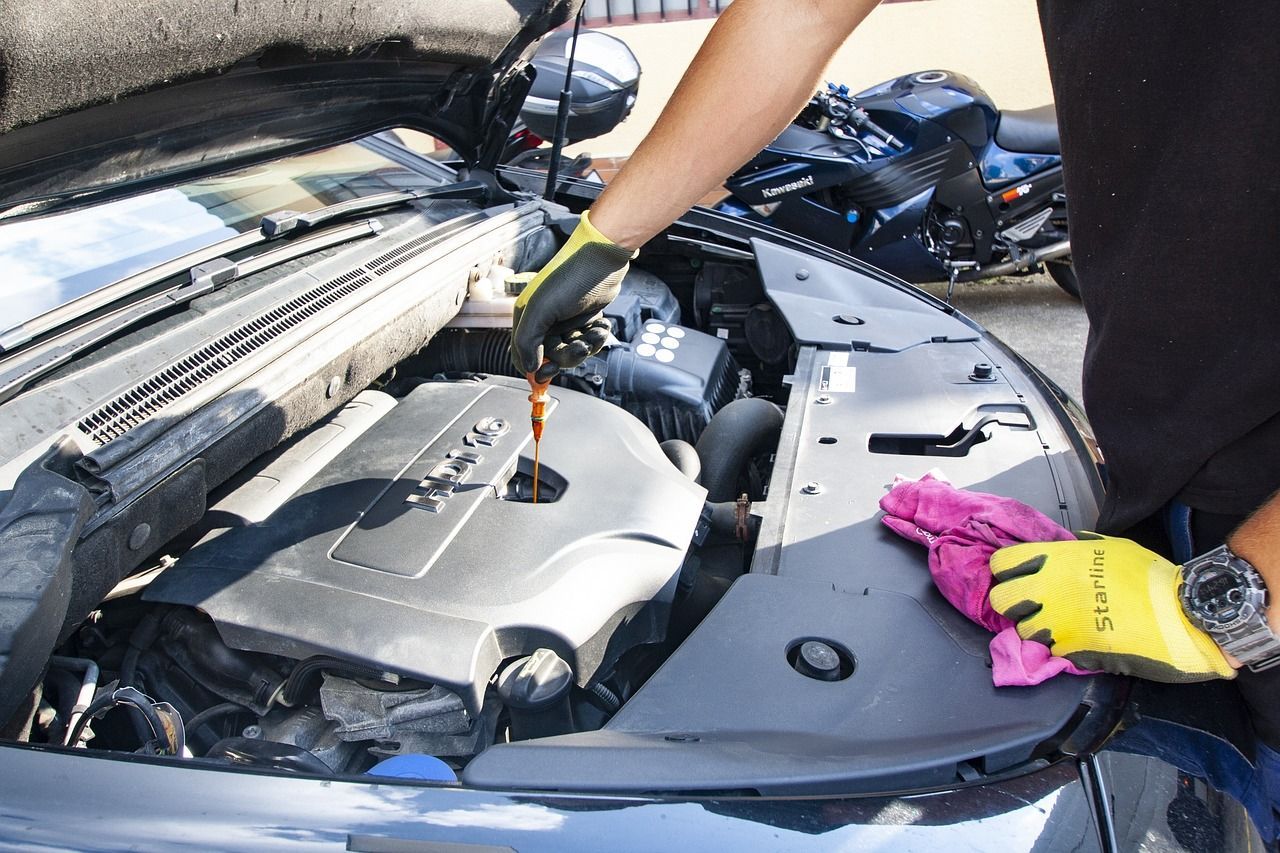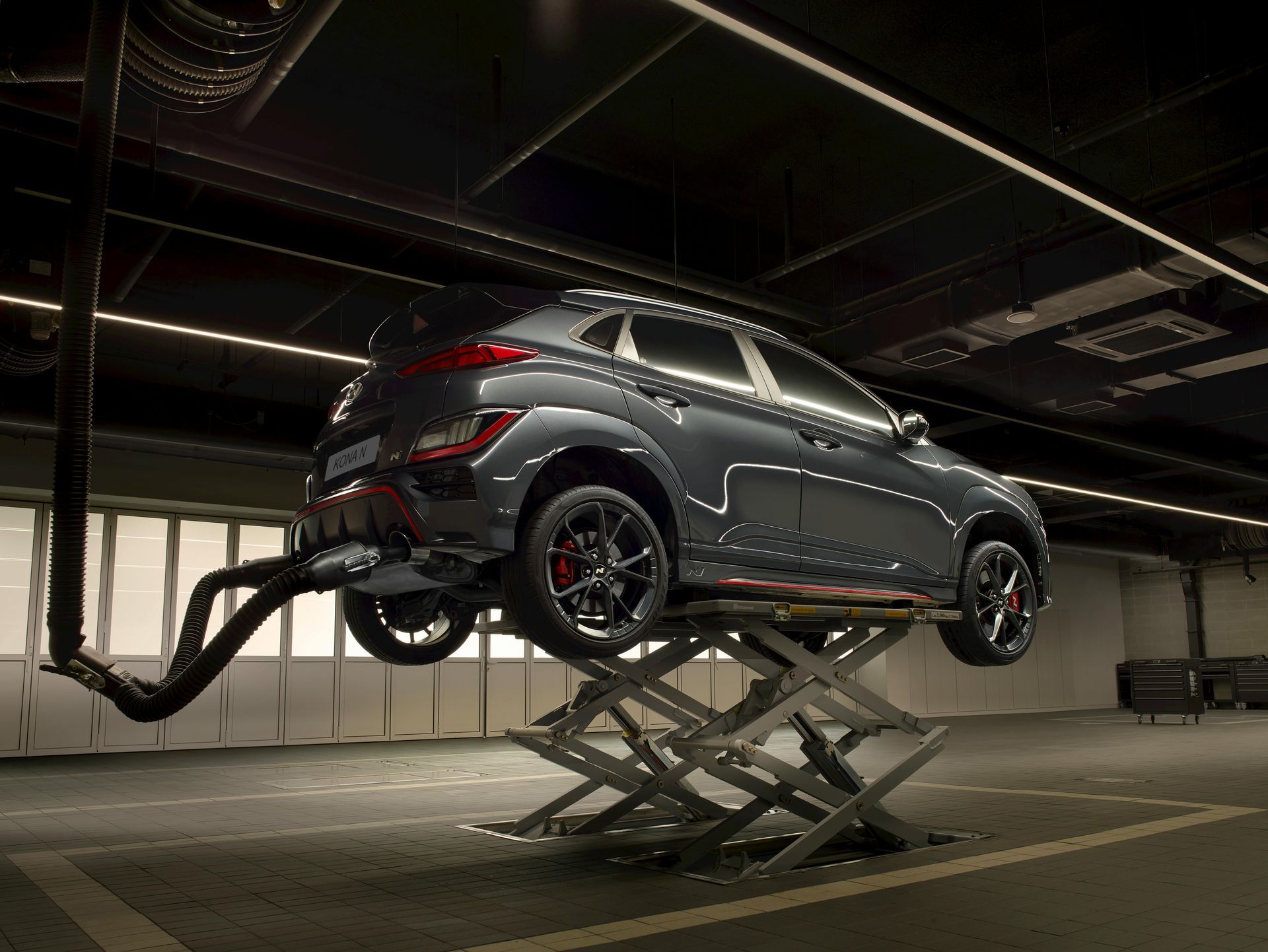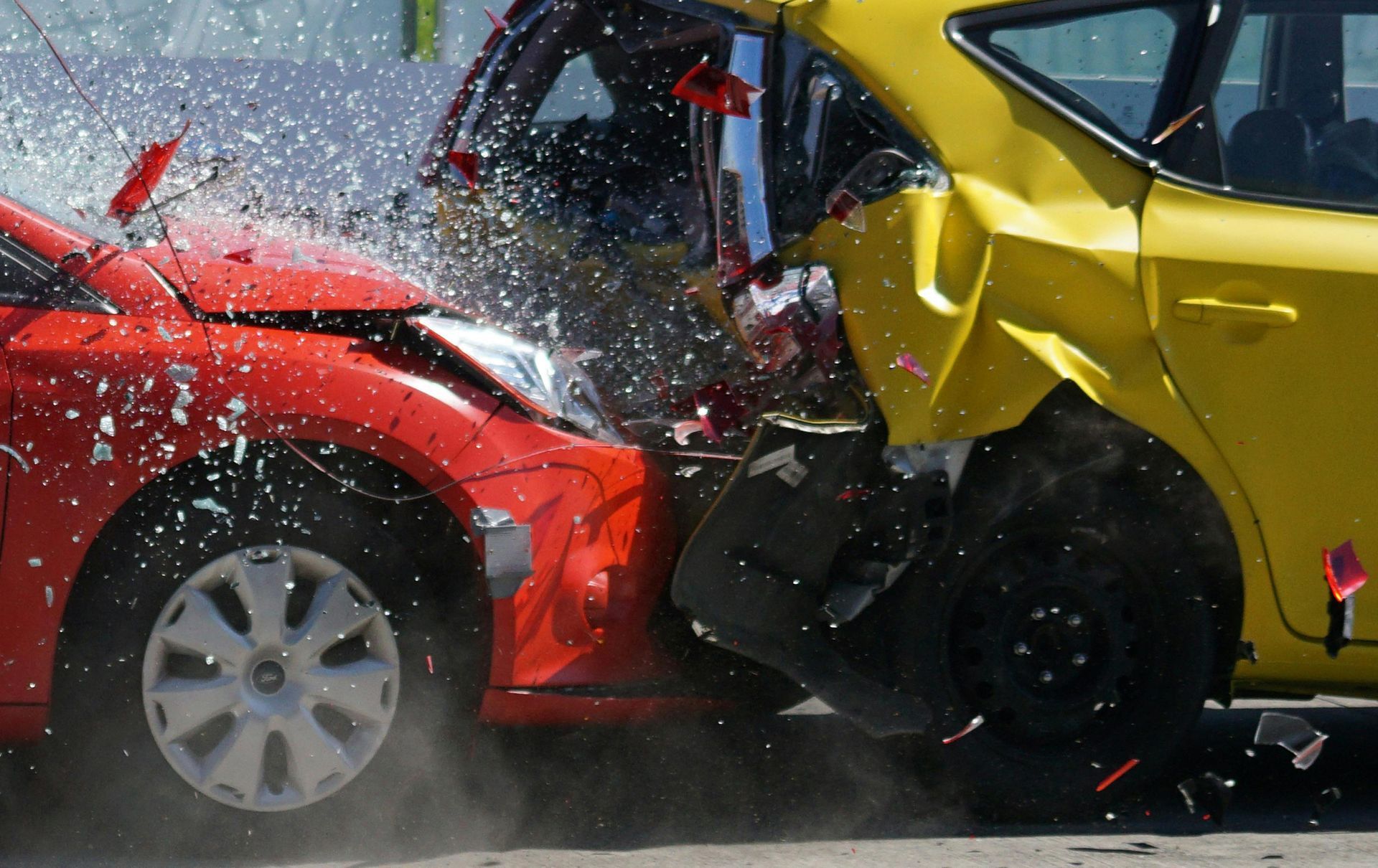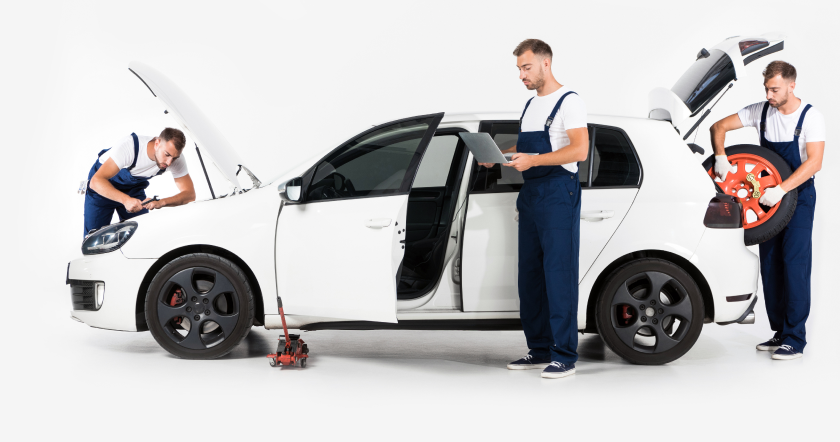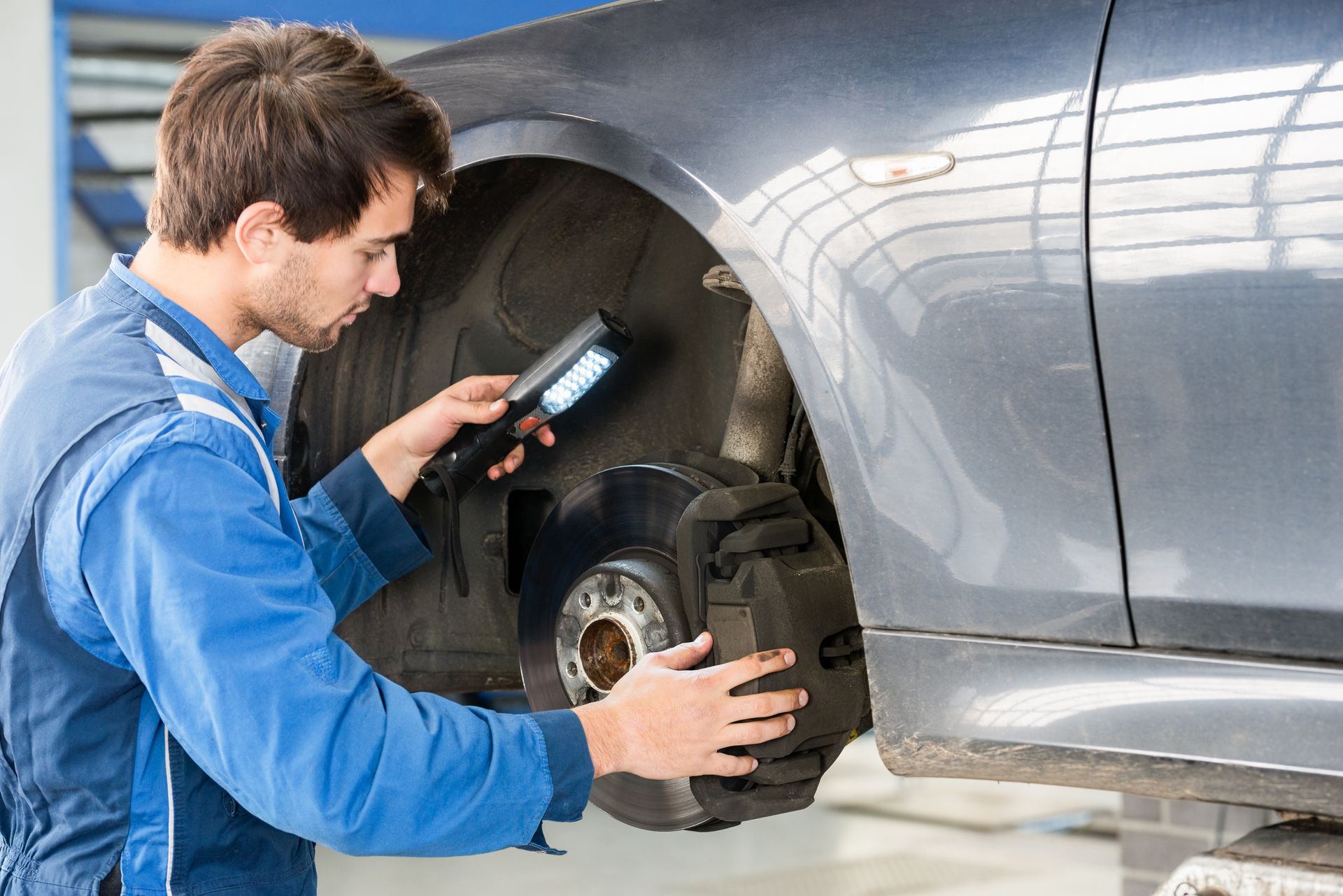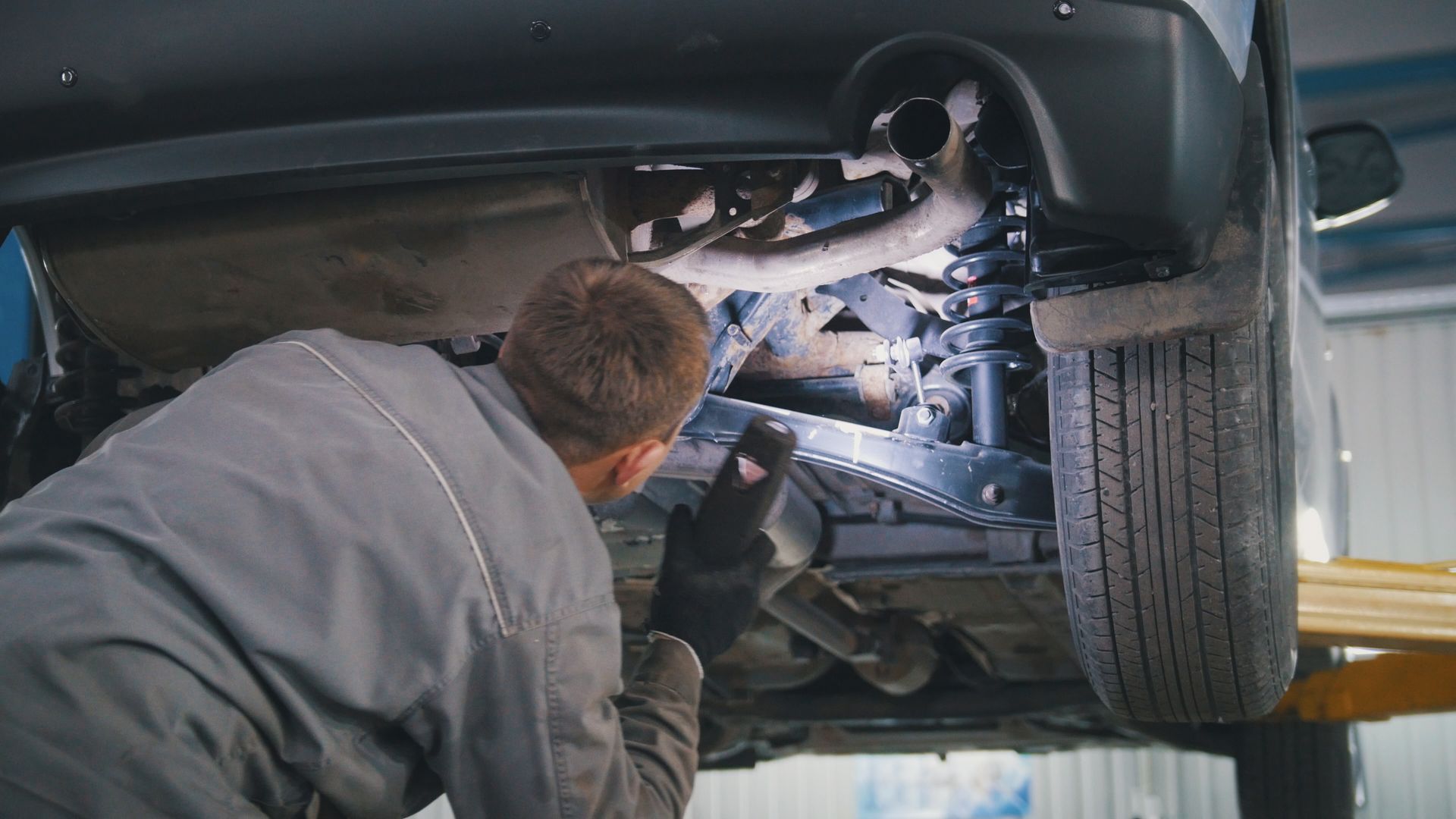When faced with the aftermath of auto frame damage, the selection of a collision center for repair is pivotal in restoring your vehicle's structural integrity and ensuring safety on the road. Understanding the intricate process involved in frame repair and the critical factors to take into account can aid in making an informed decision. By exploring the nuances of choosing the best collision center equipped with skilled technicians and modern repair tools, you can set the stage for a seamless restoration experience.
Key Takeaways
- Prioritize certified technicians for expert frame repair.
- Select centers with advanced frame repair equipment.
- Consider insurance-recommended collision centers for quality assurance.
- Evaluate customer reviews and recommendations for reputable service.
- Ensure thorough assessment, precise alignment, and quality guarantees.
Understanding Auto Frame Damage: The Importance of Proper Repair
Auto frame damage can have a significant impact on both the safety and performance of a vehicle. Proper repair is vital to restoring the structural integrity of the frame and ensuring the vehicle functions as intended.
Understanding the severity of frame damage and the role of frame repair is essential in maintaining the overall quality and safety of the vehicle.
The Severity of Frame Damage: Impact on Vehicle Safety and Performance
Understanding the impact of frame damage on vehicle safety and performance is essential for making informed decisions regarding proper repair procedures. When evaluating the severity of frame damage, several factors come into play:
Structural Integrity: Frame damage can compromise the structural integrity of the vehicle, leading to a higher risk of collapse or failure in the event of a subsequent collision.
Crashworthiness: Frame damage affects the vehicle's ability to withstand a crash, potentially reducing its crashworthiness and putting occupants at greater risk of injury.
Alignment Issues: Frame damage can cause misalignments, affecting the vehicle's handling, steering responsiveness, and overall performance.
Safety Systems: Modern vehicles rely on integrated safety systems that may be compromised by frame damage, impacting the effectiveness of features like airbags and crumple zones.
Understanding these aspects of frame damage highlights the importance of seeking professional assistance from a reputable collision center to ensure proper evaluation and repair to maintain vehicle safety and performance.
The Role of Frame Repair: Restoring Structural Integrity
Restoring the structural integrity of a vehicle's frame through proper repair procedures is essential in ensuring its safety and performance on the road. When a vehicle's frame is damaged, whether due to a collision or other impact, it can compromise the overall stability and safety of the vehicle. Frame repair plays a vital role in bringing the vehicle back to its pre-accident condition by addressing the structural damage effectively.
Professionals skilled in frame repair techniques have the expertise to assess the extent of the damage accurately and develop a repair plan that restores the frame to its original specifications. Utilizing specialized equipment and techniques, they can realign the frame, repair any dents or bends, and reinforce weakened areas to ensure the structural integrity of the vehicle is fully restored.
Choosing the Right Collision Center for Frame Repair
When choosing a collision center for frame repair, it is vital to prioritize expertise and experience by seeking out specialized technicians.
Additionally, look for facilities equipped with state-of-the-art tools to guarantee precise repairs.
Certifications, accreditations, customer reviews, and insurance company recommendations are also important factors to take into account when evaluating the quality and reliability of a collision center.
Expertise and Experience: Look for Specialized Technicians
Skillful craftsmanship is crucial when selecting a collision center for auto frame repair. When it comes to frame straightening and ensuring the structural integrity of your vehicle, having specialized technicians with the necessary expertise and experience is paramount.
Here are four key factors to keep in mind when looking for specialized technicians:
- Certifications: Look for collision centers that employ technicians certified by industry-recognized organizations like I-CAR (Inter-Industry Conference on Auto Collision Repair) or ASE (National Institute for Automotive Service Excellence).
- Training and Experience: Choose a collision center where technicians have undergone specific training in frame repair and have a proven track record of successfully handling frame straightening jobs.
- Specialized Equipment: Make sure that the collision center has the latest tools and equipment designed for precise frame repairs, such as computerized measuring systems and hydraulic straightening machines.
- Customer Reviews: Check online reviews and testimonials from previous customers to gauge the satisfaction levels with the technicians' workmanship and the quality of frame repair services provided.
State-of-the-Art Equipment: Advanced Tools for Precise Repairs
Utilizing cutting-edge technology and advanced equipment is essential for guaranteeing precise frame repairs at a collision center specializing in auto frame repair. When selecting a collision repair center for your auto frame needs, it is important to inquire about the equipment they use. State-of-the-art tools such as computerized frame measuring systems, laser measuring systems, and specialized frame straightening machines play a significant role in achieving accurate and high-quality repairs.
Computerized frame measuring systems enable technicians to assess the extent of the damage with precision, ensuring that every inch of the auto frame is properly aligned. Laser measuring systems further enhance this accuracy by providing detailed measurements that guide the repair process. Specialized frame straightening machines are designed to manipulate the frame back to its original shape with meticulous detail, ensuring structural integrity and safety.
A collision repair center equipped with advanced tools not only guarantees precise repairs but also signifies a commitment to quality craftsmanship in restoring your auto frame to its pre-accident condition.
Certifications and Accreditations: Ensuring Quality Standards
To ensure the highest quality standards in auto frame repair, it is essential to consider the certifications and accreditations held by a collision center specializing in frame repair services. Certifications serve as an assurance that the technicians working on your vehicle have undergone specific training and possess the necessary skills to handle frame repairs with precision and expertise.
When choosing a collision center for frame repair, consider the following:
- I-CAR Certification: Look for a collision center that is I-CAR certified, indicating that the technicians have received training in the latest techniques for safe and effective frame repairs.
- ASE Certification: ASE-certified technicians demonstrate a high level of competency in automotive repair, ensuring that your vehicle is in capable hands.
- Manufacturer Certifications: Collision centers with certifications from vehicle manufacturers have the expertise and knowledge to perform frame repairs according to the manufacturer's specifications.
- BBB Accreditation: A collision center accredited by the Better Business Bureau signifies a commitment to upholding high standards of quality and customer service in auto frame repair.
Customer Reviews and Testimonials: Assessing Reputation
How can customer reviews and testimonials assist in evaluating the reputation of collision centers offering frame repair services?
Customer reviews play an important role in evaluating the reputation of collision centers that provide auto frame repair services. By reading the experiences shared by previous customers, individuals can gain insights into the quality of service, level of expertise, and overall satisfaction provided by the collision center.
Positive reviews highlighting excellent craftsmanship, timely repairs, and great customer service can indicate a reputable collision center that values customer satisfaction. On the other hand, multiple negative reviews pointing out issues such as incomplete repairs, delays, or poor communication may signal red flags regarding the center's reliability.
Testimonials that consistently mention professionalism, attention to detail, and successful outcomes can further strengthen the reputation of a collision center specializing in frame repairs. Therefore, prospective clients should carefully consider customer feedback and reviews when selecting a collision center for auto frame repair to ensure a positive experience and satisfactory results.
Insurance Company Recommendations: Utilizing Network Providers
When considering a collision center for frame repair services, it is beneficial to take into account insurance company recommendations and the utilization of network providers. Insurance companies often have a list of preferred auto body repair shops that meet their standards for quality and service.
Here are four reasons why utilizing network providers recommended by your insurance company can be advantageous for your collision repair needs:
- Streamlined Process: Network providers have established relationships with insurance companies, making the repair process smoother and more efficient.
- Quality Assurance: Insurance-recommended collision repair centers are vetted for their expertise and quality of work, giving you peace of mind regarding the repair of your vehicle's frame.
- Guaranteed Work: Opting for a network provider may come with guarantees on the repair work done, ensuring that any issues post-repair will be taken care of.
- Cost Savings: Some insurance companies offer incentives or discounts when you choose a network provider, potentially saving you money on the overall repair costs.
The Frame Repair Process: What to Expect
When bringing your vehicle in for frame repair, you can expect a thorough assessment and inspection to determine the extent of the damage.
Following this, the process typically involves frame straightening to restore the structural integrity of the vehicle.
Additionally, welding and reinforcement techniques are utilized to repair any damaged areas, followed by painting and refinishing to match the original finish.
Assessment and Inspection: Evaluating the Extent of Damage
During the evaluation and inspection phase at a collision center, certified technicians carefully assess the extent of damage to determine the necessary repairs for the frame. This vital step guarantees that all damage is identified and addressed effectively.
Here are four key aspects involved in this evaluation process:
- Visual Inspection: Technicians visually examine the frame for visible signs of damage such as bends, cracks, or misalignments.
- Diagnostic Tools: Advanced diagnostic tools like computerized measuring systems are utilized to evaluate the structural integrity accurately.
- Damage Documentation: Detailed documentation of the damage is recorded, including photographs and written descriptions for insurance purposes.
- Evaluation of Repair Options: After evaluating the damage, technicians assess the repair options available, considering factors like the extent of damage, safety implications, and cost-effectiveness.
Frame Straightening: Restoring Structural Integrity
Restoring the structural integrity of a damaged frame through frame straightening is an essential step in the auto frame repair process at a collision center. Frame straightening involves using specialized equipment to carefully bend and reshape the frame back to its original form, ensuring that the vehicle's structural strength is regained.
This process is critical in ensuring the safety and functionality of the vehicle after experiencing frame damage from a collision or other impact. During frame straightening, skilled technicians meticulously analyze the frame's alignment and utilize hydraulic machines and computerized measuring systems to apply precise force to bend the frame back into shape.
Through this methodical approach, any distortions or bends in the frame are corrected, allowing the vehicle to maintain its structural integrity and alignment.
Welding and Reinforcement: Repairing Damaged Areas
Repairing damaged areas through welding and reinforcement is an essential aspect of the frame repair process at a collision center. When addressing auto frame repair at a body shop, skilled technicians use specialized techniques to effectively restore the structural integrity of the vehicle.
Here are key points to keep in mind during the welding and reinforcement stage:
- Assessment: Technicians conduct a thorough inspection to identify all damaged areas requiring welding and reinforcement. This step guarantees that no overlooked issues compromise the repair process.
- Precision Welding: Utilizing advanced welding equipment, technicians precisely weld damaged areas, adhering to manufacturer specifications for the particular make and model of the vehicle.
- Quality Materials: High-quality materials are used for reinforcement to ensure long-lasting durability and safety of the repaired auto frame.
- Post-Repair Inspection: After welding and reinforcement work is completed, a detailed inspection is performed to verify that the repaired areas meet safety standards and align with the vehicle's original structural integrity.
Painting and Refinishing: Matching the Original Finish
Achieving a seamless match to the original finish is a critical aspect of the painting and refinishing stage in the auto frame repair process at a collision center. When a vehicle undergoes auto body repair due to frame damage, ensuring that the new paint blends flawlessly with the existing finish is essential for a professional and aesthetically pleasing outcome.
To match the original finish, collision centers employ skilled technicians who meticulously analyze the vehicle's paint color, type, and texture. Advanced paint matching technology is often utilized to create a custom paint mixture that perfectly aligns with the car's original color.
Additionally, professionals may blend the new paint into the surrounding panels to create a smooth integration, ensuring that no stark contrasts are visible.
The painting and refinishing stage is a pivotal step in the auto frame repair process, as it not only restores the vehicle's appearance but also protects the frame from corrosion and further damage. By prioritizing precision and expertise in paint matching, collision centers can deliver high-quality results that meet or exceed customer expectations.
Factors Affecting Frame Repair Costs
When it comes to auto frame repair costs, several key factors play an important role. The severity of the damage sustained in the collision will directly impact the overall repair expenses.
Additionally, the make and model of your vehicle can influence the costs due to varying parts and labor expenses.
Understanding your insurance coverage and benefits is also essential in determining the financial implications of the frame repair.
Severity of Damage: The Extent of the Collision
The extent of the collision directly influences the complexity of auto frame repairs and subsequently impacts the associated costs. When determining the severity of damage, several key factors come into play:
- Structural Integrity: Extensive collision damage can compromise the structural integrity of the vehicle frame, requiring intricate repairs to guarantee safety.
- Alignment Issues: Severe collisions often result in misalignments that necessitate specialized equipment and expertise to correct properly.
- Component Damage: Beyond the frame, components such as suspension systems or drivetrain elements may suffer damage, adding to the overall repair complexity.
- Material and Labor Costs: Repair shops may need to source specific materials or invest additional labor hours to address extensive collision damage effectively.
Considering these factors is important when evaluating the extent of collision damage and estimating the associated repair costs. Choosing a reputable repair shop experienced in handling complex frame repairs is vital to ensure the vehicle's safety and structural integrity post-repair.
Make and Model of Your Vehicle: Affecting Parts and Labor Costs
Factors such as the make and model of your vehicle play a significant role in influencing the parts and labor costs associated with auto frame repairs. Different vehicles have varying frame designs and structures, which can impact the complexity of repair work required.
For instance, luxury cars or imported vehicles often have specialized parts that are more expensive to replace or repair compared to domestic or economy vehicles.
Moreover, the availability of parts for specific makes and models can also affect the overall cost of frame repairs. If certain parts need to be custom ordered or are rare to find, it can lead to increased repair expenses and longer repair times.
Additionally, labor costs can vary depending on the complexity of working on a particular vehicle's frame. Mechanics may need specialized training or tools to work on certain makes and models, which can result in higher labor charges.
Therefore, when seeking auto frame repairs, it is crucial to take into account how the make and model of your vehicle can impact both parts and labor costs to make an informed decision.
Insurance Coverage: Understanding Your Benefits
Understanding your insurance coverage is key to managing the factors that affect frame repair costs. When dealing with auto frame damage, knowing how your insurance benefits can help cover the expenses is essential.
Here are four essential points to keep in mind:
- Coverage Limits: Review your policy to understand the maximum amount your insurance will pay for collision repairs, including frame damage.
- Deductibles: Determine the deductible amount you are responsible for paying out of pocket before your insurance kicks in for frame repairs.
- Preferred Repair Shops: Check if your insurance provider has a list of preferred collision centers where you can get quality frame repair services.
- Additional Services: Some insurance policies may offer additional benefits such as rental car coverage while your vehicle is being repaired, which can help you choose the best collision center for your needs.
Ensuring Quality Frame Repair: Key Considerations
When considering frame repair, proper alignment is essential for maintaining vehicle handling and safety.
Additionally, rust prevention plays an important role in protecting against corrosion and extending the lifespan of the vehicle.
Lastly, warranty and guarantees provided by collision centers ensure quality workmanship and offer peace of mind to customers.
Proper Alignment: Maintaining Vehicle Handling and Safety
To guarantee exceptional vehicle handling and safety post-frame repair, maintaining proper alignment is paramount. Proper alignment ensures that the wheels are positioned correctly according to the manufacturer's specifications, preventing issues such as steering problems and uneven tire wear.
Here are four key considerations to maintain proper alignment after auto frame damage:
- Professional Inspection: Choose a reputable auto body shop with certified technicians who can accurately assess the alignment of your vehicle post-frame repair.
- Advanced Equipment: Ensure that the collision center uses state-of-the-art alignment equipment to make precise adjustments to your vehicle's alignment angles.
- Thorough Testing: After alignment adjustments, the best auto body shops conduct extensive road tests to confirm that the vehicle handles correctly and drives smoothly.
- Regular Maintenance: Schedule periodic alignment checks to catch any misalignments early and prevent further damage to your vehicle's frame and suspension components.
Rust Prevention: Protecting Against Corrosion
Preventing rust is an essential aspect of ensuring quality frame repair, as it safeguards the structural integrity of the vehicle against corrosion. When addressing auto frame damage at the best collision center, rust prevention becomes paramount to prolonging the life of the repaired frame and maintaining the safety of the vehicle.
To protect against corrosion, the best collision centers utilize advanced rust prevention techniques. This includes thorough cleaning of the affected area to remove any existing rust, applying specialized rust inhibitors, and utilizing high-quality rust-resistant coatings. By implementing these measures, the collision center can effectively prevent future corrosion and ensure the longevity of the repaired auto frame.
Additionally, regular inspections and maintenance play a significant role in rust prevention. The best collision centers recommend periodic checks to detect any signs of rust or corrosion early on, allowing for timely intervention and preservation of the frame's structural integrity.
Warranty and Guarantees: Ensuring Quality Workmanship
Given the importance of ensuring quality frame repair, one key aspect to ponder is the warranty and guarantees provided by the collision center. When selecting an auto body shop for frame repair, it is vital to take into account the assurances they offer to guarantee the quality of their workmanship.
Here are four essential points to keep in mind regarding warranties and guarantees in the context of auto frame repair:
- Length of Warranty: Inquire about the duration of the warranty provided for the frame repair. A reputable body repair shop typically offers a substantial warranty period, reflecting their confidence in the repair work.
- Coverage Details: Understand what aspects of the frame repair are covered under the warranty. Clarity on the coverage will help you assess the extent of protection offered for the repaired frame.
- Guarantees on Workmanship: Ensure that the collision center provides guarantees on the quality of their workmanship. A solid guarantee signifies the commitment of the auto body shop to delivering high-quality frame repair services.
Transferability of Warranty: Check if the warranty on the frame repair is transferable in case you sell the vehicle. A transferable warranty can add value to your vehicle and provide assurance to potential buyers.
